
Taylor MootJoint Student with Rene Lopez (Physics) PhD Chemistry, UNC Chapel Hill, 2017 B.S. Chemistry-University of Rochester, 2013 Interests: Prussian Blue Art, Snowboarding, and Flannels |

|
First Author
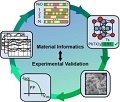
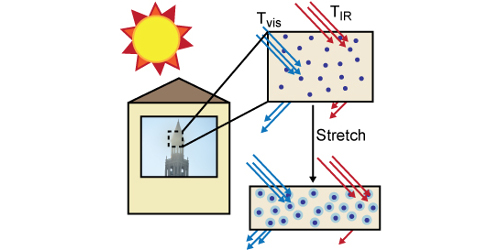
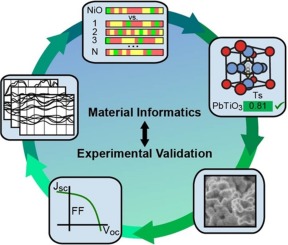
Materials informatics is a rapidly emerging data- and knowledge-driven approach for the identification of novel materials for a range of applications, including solar energy conversion. Despite significant experimental effort, the development of highly efficient, stable, and cost-effective photovoltaic materials remains a challenging scientific problem. The quest for precisely defined semiconductor properties revolves around an immensely broad landscape of structural parameters. Here, we have resolved this challenge by applying material informatics to design a novel photocathode material for dye-sensitized solar cells (DSSCs). By conducting a virtual screening of 50,000 known inorganic compounds, we have identified lead titanate (PbTiO3), a perovskite, as the most promising photocathode material. Notably, lead titanate is significantly different from the traditional base elements or crystal structures used for photocathodes. The fabricated PbTiO3 DSSC devices exhibited the best performance in aqueous solution, showing remarkably high fill factors compared to typical photocathode systems. The results highlight the pivotal role materials informatics can play in streamlining the experimental development of materials with the desired properties.
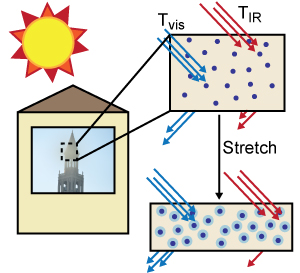
Vanadium dioxide (VO2) is a common material for use in thermochromic windows due to a semiconductor-to-metal transition (SMT) that is coupled with a change in infrared opacity. Commercialization of VO2-based thermochromic technology is hampered by relatively expensive synthesis and film fabrication techniques as well as overall low performance as a window material. Here, simulations that indicate the plasmon resonance of VO2 nanoparticles in a composite film, which can be tuned to achieve record performance values, are reported. These simulations are experimentally verified by fabricating a VO2 nanoparticle composite in an elastomeric matrix using low-temperature and atmospheric processing conditions. The optical properties of the films are analyzed, yielding visible transmittance and infrared modulation values within the range of top-performing thermochromic windows. In addition, an improvement in performance is observed upon stretching the films, an effect that can be attributed to a local refractive index modulation. The results highlight the potential use of elastomeric composites as a low-cost route to higher-performance smart windows.
Contributing Author

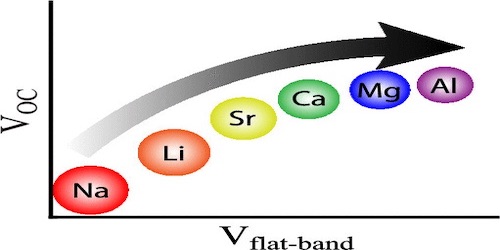
The performance of dye-sensitized solar cells (DSSCs) depends on the properties and interactions of three fundamental components: the semiconductor, chromophore, and electrolyte. For the electrolyte, the dependence of DSSC performance on the identity and valence state of the spectator cation has not been well studied in p-type semiconductor systems, although the effects of these species in n-type TiO2 devices are significant, producing large shifts in semiconductor flat-band potential, charge-transfer kinetics, photocurrent, and open-circuit voltage (VOC). Here, we vary the spectator cation in p-type NiO DSSCs and demonstrate an increase in VOC by over 50% with two common redox couples. Using optimal cations, we achieved high VOC values without a significant reduction in photocurrent. Mott–Schottky analysis and electrochemical impedance spectroscopy reveal that the cation can shift the flat-band potential of NiO by nearly 1 V and substantially alter the lifetime of charge carriers and charge-transfer resistance at the semiconductor–electrolyte interface. Differences between the anionic and cationic redox couples employed suggest favorable and unfavorable interactions, respectively, with divalent cations at the NiO surface, causing increases and decreases in charge carrier recombination rate constants. Our results highlight the complex interaction between the semiconductor and electrolyte solution and indicate that varying the cation should yield immediate improvements in device metrics for most p-type DSSC systems.